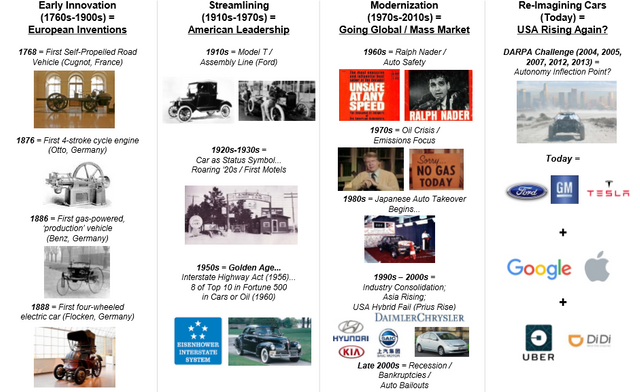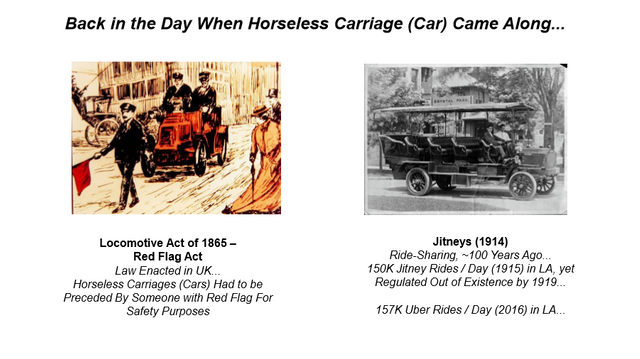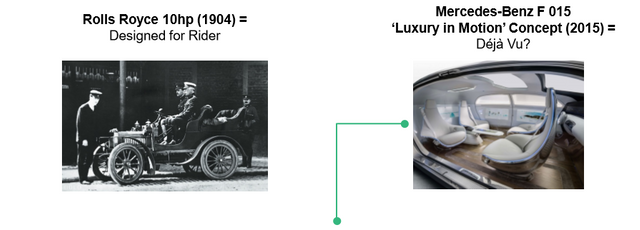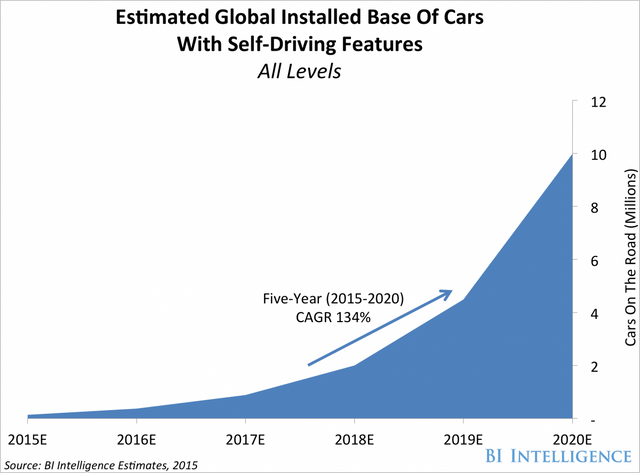Car Industry Evolution from 1760 till most recent Self-Driving Cars
While sitting in traffic on the way to the office yet again today, I thought of writing an article about teleportation, as I believe that this is now a technology which will really change the world forever. I am however not sure if I will volunteer as a the first to try out teleportation. It might hurt when we get this wrong :)
So how did the car industry evolve to where it is today. If we look at the Internet Trend report for 2016, Source Credit, there was some major improvements over the years.
Car industry Evolution from 1760 till today's Self-Driving Cars
The drive behind the car industry is Innovation and Globalisation

Very interesting fact that UBER is actually not a new idea :) It was done from 1914 to 1919, before regulations ruled this out in 1919. It was called jitneys back in the day.

What if a car:
- IS part of a network that provides a commuting service that comes to you?
- Is the most advanced computer you use?
- In Effect is a on demand cash generator, boosted by car / ride sharing
- Gives you safe driving buy backs from your insurer
- Is safer due to automation /reduced human error
- Drives itself and parks itself
- Make you want to commute and more productive?
What if the backseat becomes the most important seat in the car again.
In today's life and overcrowded roads, the most important seat is currently the driver seat due to many reasons like safety and you actually have to drive the vehicle. This is going to change, in the very near future. 
Regulation
Our biggest problem for automated vehicles is definitely regulation and the slow rate at which regulation adapts to something like this. The tech is already available and we are ready to start using it from tomorrow. There is however is massive evolution that needs to take place in order for us to have the world automated. Take a look at the Google Self Drive Project Video here
Business Insider 's view is that there will be 10 Million self-driving cars on the road by a early as 2020.
Self-driving cars are no longer a futuristic idea. Companies like Mercedes, BMW, and Tesla have already released, or are soon to release, self-driving features that give the car some ability to drive itself.
Tech companies are also trying to pioneer the self-driving car. Recently, Google announced that it would be testing its prototype of a driverless car on roads this summer in California.
In an in-depth report from BI Intelligence, we analyze the self-driving car market by analyzing the current state of the self-driving car and provide an in-depth analysis for how we see the self-driving car progressing over the next five years. Our in-depth analysis describes the economic impact that self-driving cars can have and look at the current barriers preventing the self-driving car from coming to market.
Some more facts from Business Insider
- Self-driving cars are not some futuristic auto technology; in fact there are already cars with self-driving features on the road. We define the self-driving car as any car with features that allow it to accelerate, brake, and steer a car's course with limited or no driver interaction.
- We divide the self-driving car into two different types: semi-autonomous and fully autonomous. A fully autonomous vehicle can drive from point A to point B and encounter the entire range of on-road scenarios without needing any interaction from the driver. These will debut in 2019.
- By the end of the forecast period, we expect there will be nearly 10 million cars with one of our defined self-driving car features.
- Fully autonomous cars are further divided into user-operated and driverless vehicles. Because of regulatory and insurance questions, user-operated fully autonomous cars will come to market within the next five years, while driverless cars will remain a long ways off.
- The biggest benefits of self-driving cars are that they will help to make roads safer and people's lives easier. In the UK, KPMG estimates that self-driving cars will lead to 2,500 fewer deaths between 2014 and 2030.
But the barriers to self-driving cars remain significant. Costs need to come down and regulations need to be clarified around certain self-driving car features before the vehicles fully take off among mainstream consumers.
Source Credit : Business Insider
I am sure there is a lot of us that will rather sit in the back seat typing away at a Steemit article while we are stuck in traffic. I know I will. Like I mentioned earlier, I will not want to be the first to try teleportation :)
If you enjoy my articles please follow me on my blog at @jacor


as for self driving cars, I do then to think regulations are some ways deterring it. however, in Singapore, we are already doing some bit of test bed where the land transport authority is involved. here's a piece of news from our local media:
http://www.todayonline.com/singapore/worlds-first-self-driving-taxis-hit-streets-one-north
This is excellent @ace108 . I love Singapore. I have only been there once, but would love to go back at some stage in my life. Maybe you should arrange a Steem Saturday there and I will come and speak at the event!
If you do come, let me know. I'll have coffee with you at our local coffee stall/starbucks if you prefer.:-)
I'm on steemit.chat with the same name.
Steem Saturday also sounds good. I'll like to help if I can.